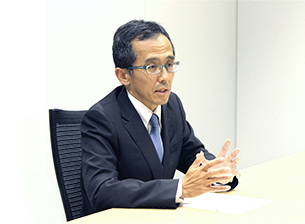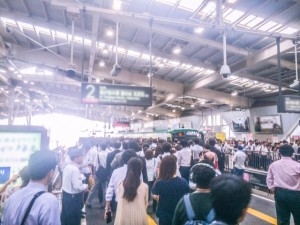Blog
Learn the secret of the safety punctuality and comfort of Japanese railways.
An Advanced Nation in Rail/ Understanding Japan's Common Sense
No.3: How Can Japanese Rail Transport Us Safely?
A major advantage of rail travel is its ability to punctually transport large numbers of people and cargo while being more energy-efficient than other modes of transport. However, accidents which can cause significant delays do inevitably occur. Major accidents result in major losses for railway operators as well as a major inconvenience for passengers.
We ask why there are so few examples of such railway accidents in Japan compared to other countries.
Trouble-free trains are the first step to safety

Yosuke Nakazawa
Technology Executive of Railway Systems Division at Toshiba Corporation Infrastructure Systems & Solutions Company
Yosuke Nakazawa,Technology Executive of Railway Systems Division at Toshiba Corporation Infrastructure Systems & Solutions Company, states: "Japan's excellence in technology is exemplified by its rail systems, which are collision-free even when trains run at close intervals." Operating many trains during short periods of time greatly increases the difficulty of installing safety devices and equipment along rail lines, yet the lack of these devices raises the probability of accidents that cause delays. However, railway accidents are extremely rare in Japan.
One reason for this safety record is Japan's excellent rail signaling systems. But even with effective signaling systems and robust timetables, train breakdowns make on-time arrival at specific stations impossible. They also make it impossible to carry out normal train driving performance (acceleration and deceleration), making delays even worse.
To prevent such breakdowns from occurring, trainsets are inspected and maintained scrupulously in Japan. Regular inspection and maintenance works are necessary to prevent trainset breakdowns, such as those from brakes, doors, and other parts. This results in reduced rate of accidents and therefore contribute to a higher degree of safety. The low rate of accidents caused by breakdowns in Japan proves that trainsets in Japanese railways are maintained properly.

Nevertheless, inspection and maintenance works on trainsets needs to be performed in a well-planned and efficient manner. This is achieved by proper inspection and maintenance scheduling, which is a vital stage in the transit scheduling process, and is linked to the operating timetable in the revenue railway.
It is not true to say that Japan has been unaffected by major accidents since rail transport was introduced. However, learning from these accidents, various measures have been devised, helping to achieve safer and more sensible operations for Japanese railways. Transit scheduling provides powerful backup to attaining that goal.
The hospitality and trust that Japanese railways are famous for will be discussed in the next post.



